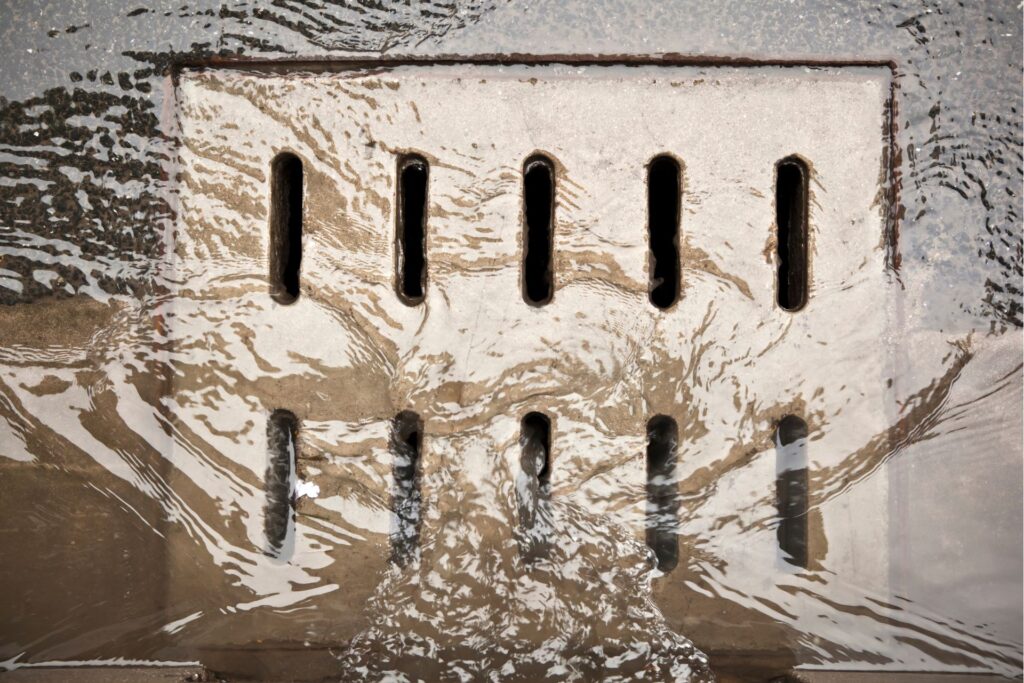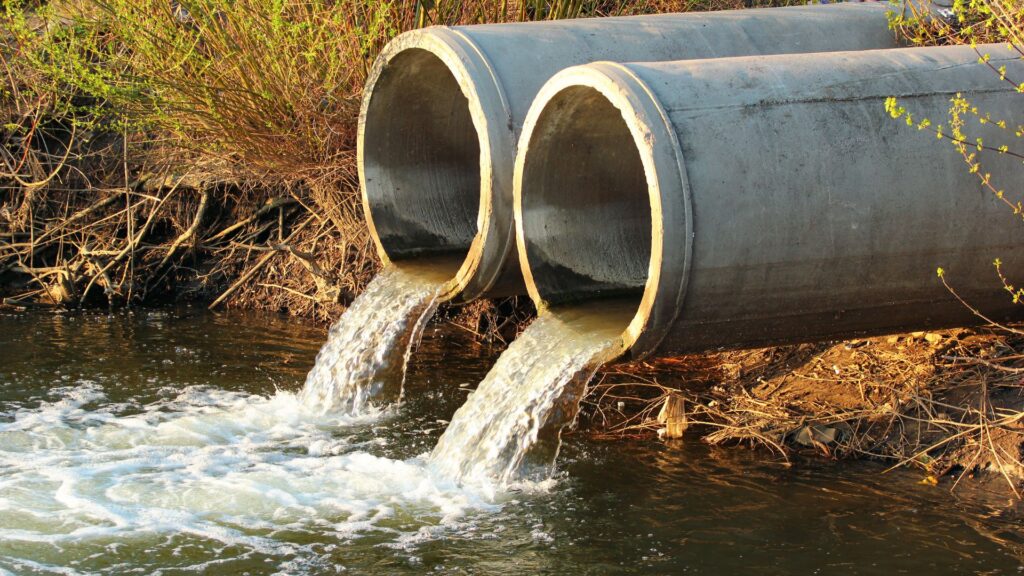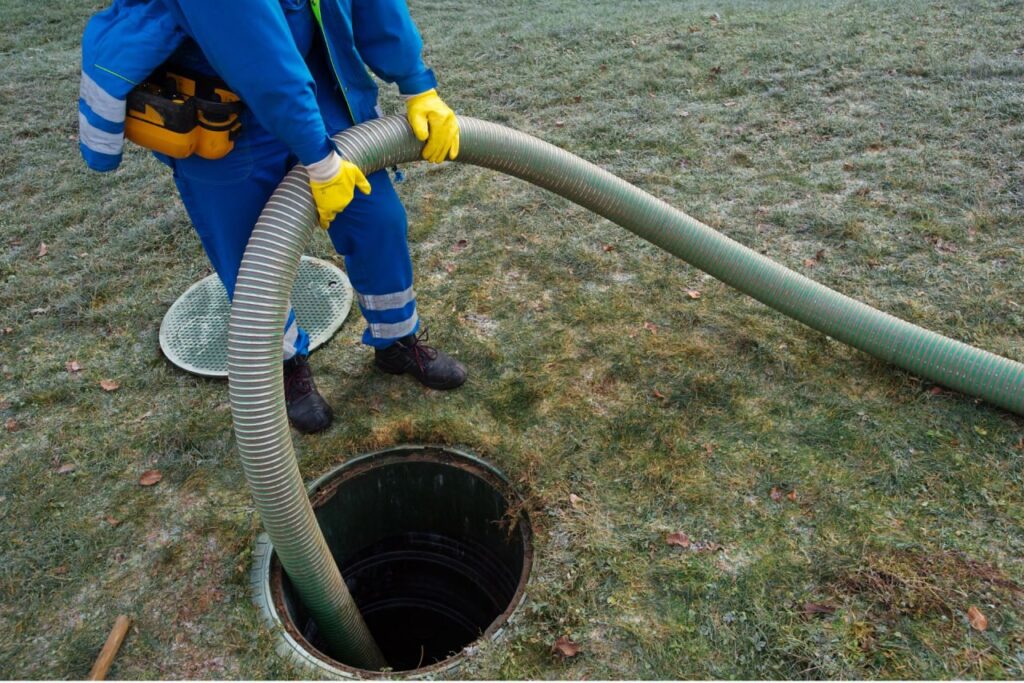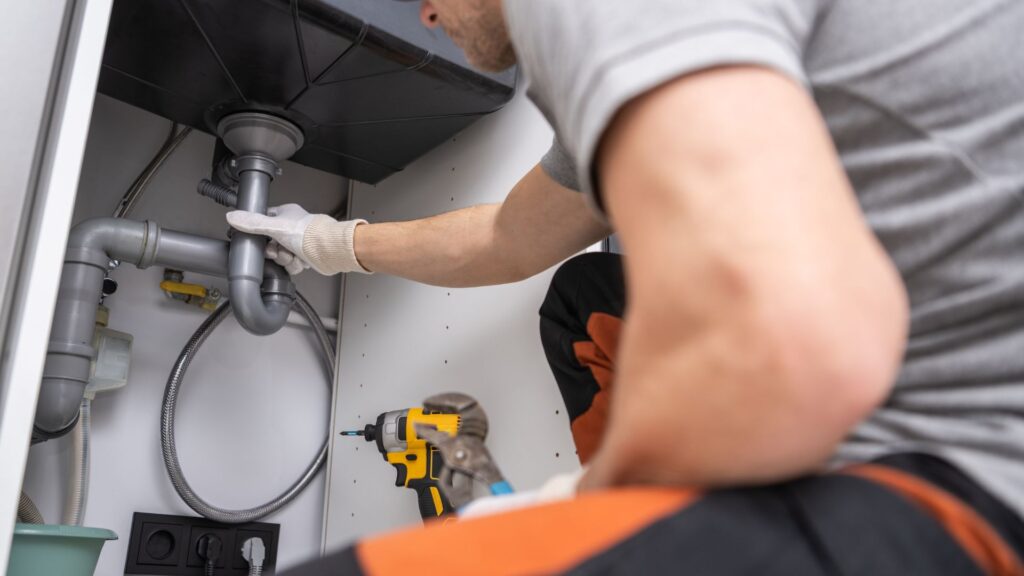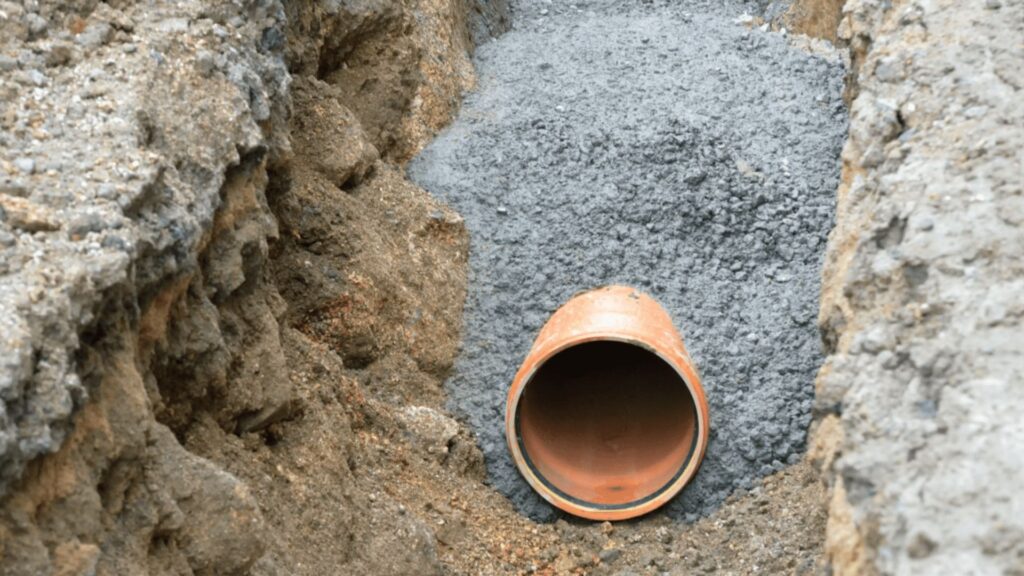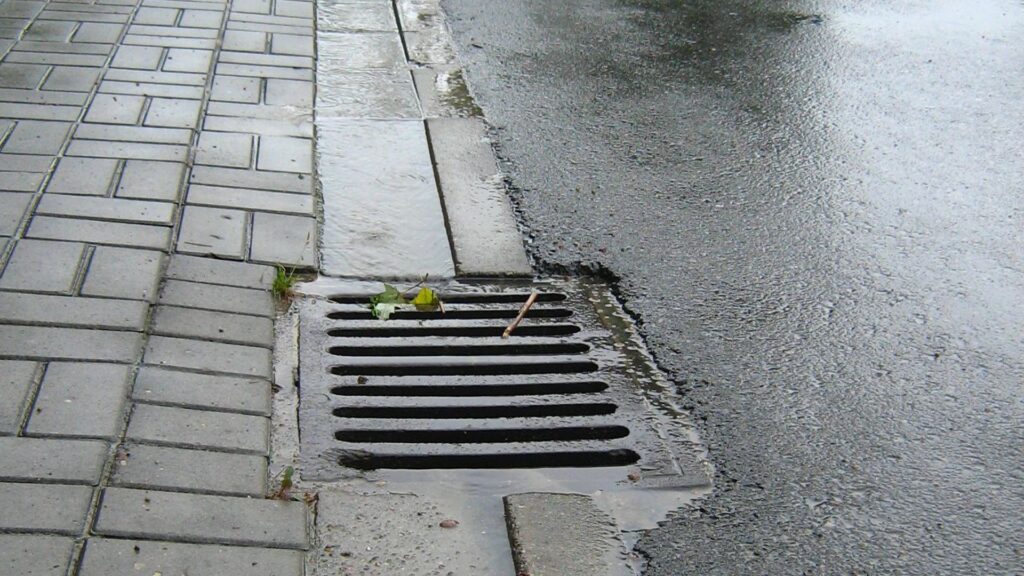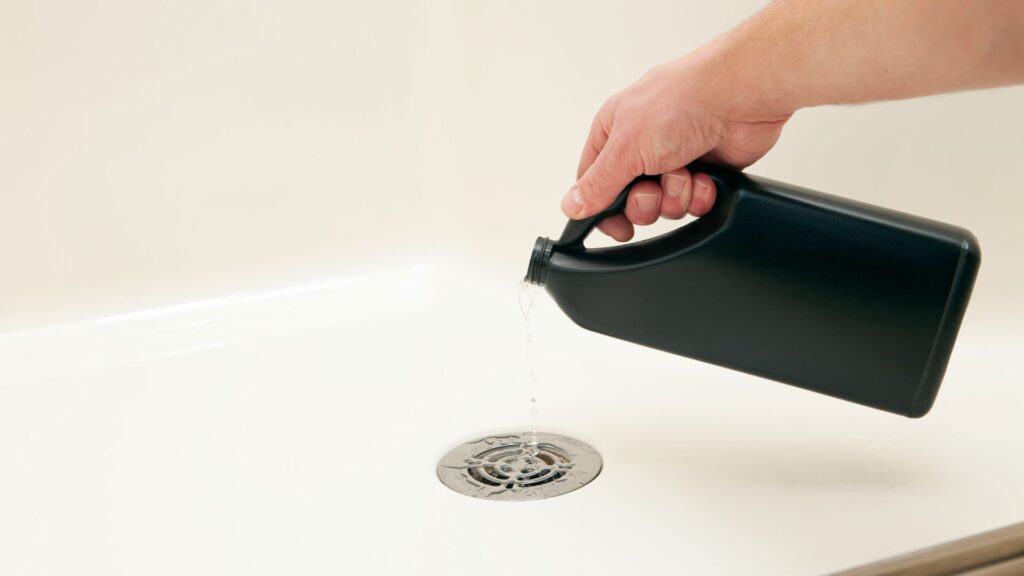Welcome to the ultimate guide to gully traps in New Zealand! Whether you’re a homeowner, a DIY enthusiast, or someone curious about the intricacies of plumbing systems, this comprehensive guide will walk you through everything you need to know about gully traps. We’ll cover what they are, how they work, the different types available, and their importance in maintaining a clean and safe environment. You’ll also find valuable tips on installation, maintenance, and troubleshooting, as well as insights into legal and environmental considerations specific to NZ. By the end of this guide, you’ll have a solid understanding of gully traps and how to manage them effectively to ensure your plumbing system runs smoothly.
A gully trap in New Zealand is an essential plumbing fixture designed to prevent sewer gases from entering buildings while allowing wastewater to flow into the drainage system. Typically installed outside near kitchens, bathrooms, and laundries, gully traps use a water seal to block unpleasant odors and harmful gases. Proper maintenance of gully traps is crucial for hygiene, health, and environmental protection, ensuring the effective functioning of your plumbing system.
- What Is A Gully Trap?
- Types Of Gully Traps
- How Gully Traps Work
- Installation Of Gully Traps
- Maintenance And Troubleshooting
- Legal And Environmental Considerations
- Benefits Of Proper Gully Trap Management
- Expert Tips And Best Practices
- Case Studies And Real-Life Examples
- FAQs: About The Gully Traps NZ
- Conclusion
- Find A Professional Drainlaying Company Near You!
What Is A Gully Trap?
A gully trap is an important component in plumbing systems, particularly in residential and commercial buildings. Understanding its definition, function, and importance can help you appreciate its role in maintaining a safe and hygienic environment.
Definition
A gully trap, often referred to simply as a “gully,” is a plumbing fixture designed to intercept and trap wastewater from sinks, showers, and other household drains before it enters the main sewer system. It typically consists of a small basin or chamber with a water seal that prevents sewer gases from escaping back into the property.
Function
The primary function of a gully trap is to collect wastewater from various sources within a building and direct it into the sewer system while blocking any backflow of harmful gases. Here’s how it works:
1. Wastewater Collection: Wastewater from kitchens, bathrooms, and laundry areas flows into the gully trap. This includes greywater from sinks, showers, and washing machines.
2. Water Seal: The gully trap maintains a water seal that effectively blocks sewer gases. This water barrier ensures that unpleasant and potentially dangerous gases do not travel back up the pipes and into the living spaces.
3. Flow Direction: Once the wastewater enters the gully trap, it is directed into the sewer system through an outlet pipe. This flow ensures that all waste is efficiently transported away from the property.
Importance
Gully traps play a crucial role in maintaining hygiene and preventing health hazards. Here are some key reasons why they are essential:
1. Prevents Sewer Gases: One of the primary functions of a gully trap is to prevent sewer gases, which can include methane and hydrogen sulfide, from entering your home. These gases can be harmful to health and have an unpleasant odor.
2. Maintains Hygiene: By ensuring that wastewater is effectively channeled away from the property, gully traps help maintain a clean and hygienic environment. This is particularly important in areas like kitchens and bathrooms where hygiene is paramount.
3. Protects Plumbing System: Gully traps also protect the overall plumbing system by preventing blockages and ensuring smooth flow. This can help extend the lifespan of your plumbing and reduce the need for frequent maintenance.
4. Compliance with Regulations: In many regions, the installation of gully traps is a regulatory requirement. Compliance with these regulations not only ensures safety but also helps avoid legal issues related to plumbing standards.
In summary, gully traps are an indispensable part of any plumbing system, ensuring that wastewater is safely and efficiently managed while preventing the backflow of harmful sewer gases. Their role in maintaining hygiene and protecting health cannot be overstated, making them a critical component in modern plumbing.

Types Of Gully Traps
Gully traps play a crucial role in maintaining the hygiene and efficiency of your drainage system. They are designed to prevent foul odors from escaping the sewer system and to trap debris that might otherwise cause blockages. Understanding the various types of gully traps can help you choose the right one for your needs.
Outdoor Gully Traps
Description and Typical Uses
Outdoor gully traps are commonly installed in external drainage systems to handle water from kitchens, bathrooms, and roofs. These traps are usually found in gardens, driveways, and other outdoor areas where water needs to be managed effectively. They are designed to prevent debris, such as leaves and dirt, from entering the sewer system, thus reducing the risk of blockages.
Outdoor gully traps are typically larger and more robust compared to indoor traps. They often feature a grate or cover to keep out large debris while allowing water to flow through. This design ensures that the trap remains functional even in heavy rain, preventing water from pooling and causing potential flooding.
Indoor Gully Traps
Description and Typical Uses
Indoor gully traps are found inside buildings, often in places like utility rooms, basements, and garages where there is a need to manage wastewater efficiently. These traps are essential for preventing foul smells from permeating the indoor environment by maintaining a water seal that blocks sewer gases.
Indoor gully traps are usually smaller and more discreet than their outdoor counterparts. They are designed to fit into tight spaces and can be easily integrated into the building’s plumbing system. These traps are crucial in areas prone to water spills or where appliances such as washing machines discharge water.
Materials
Common Materials Used for Gully Traps
1. Plastic
- Pros: Lightweight, easy to install, resistant to corrosion, and cost-effective.
- Cons: Less durable than metal options, can be damaged by UV exposure if used outdoors.
2. Cast Iron
- Pros: Extremely durable, resistant to high temperatures, and has a long lifespan.
- Cons: Heavy, prone to rust over time, and more expensive than plastic.
3. Concrete
- Pros: Very strong, resistant to chemical reactions, and ideal for heavy-duty applications.
- Cons: Difficult to install due to its weight, can crack under pressure, and may require frequent maintenance.
Comparisons
Pros and Cons of Different Types and Materials
When comparing the types and materials of gully traps, it’s essential to consider the specific requirements of your drainage system.
Outdoor vs. Indoor Traps
- Outdoor traps are more robust and can handle larger volumes of water and debris, making them suitable for exterior drainage systems. Indoor traps are compact and designed to fit seamlessly into indoor plumbing, providing effective odor control and water management.
Material Comparisons
- Plastic gully traps are an excellent choice for those looking for an easy-to-install and affordable option, but they might not withstand harsh conditions as well as cast iron or concrete.
- Cast iron traps offer durability and heat resistance, ideal for environments where high temperatures might be an issue. However, they can rust and are heavier, making installation more challenging.
- Concrete traps are the go-to for heavy-duty applications due to their strength and chemical resistance. They are, however, the heaviest and can be prone to cracking if not properly maintained.
Choosing the right gully trap involves assessing the specific needs of your drainage system, including the location (indoor or outdoor), the expected volume of water, and the potential exposure to harsh conditions. By understanding the pros and cons of each type and material, you can make an informed decision that ensures the efficiency and longevity of your drainage system.

How Gully Traps Work
Gully traps are essential components in any drainage system, designed to prevent foul odors and gases from entering buildings while efficiently managing wastewater. Understanding their mechanism, flow path, and self-cleaning properties is crucial for homeowners and professionals alike.
Mechanism
At its core, a gully trap functions by creating a water seal that blocks sewer gases from escaping into the environment. The trap is typically a U-shaped pipe that holds a small amount of water at all times. This water acts as a barrier, preventing unpleasant smells from traveling back up through the drainage system. When wastewater flows into the gully trap, it displaces the existing water, which then flows out into the main sewer line. This process ensures that the water seal remains intact, continuously blocking any potential backflow of gases.
The design of gully traps can vary, but the fundamental principle remains the same: maintaining a water seal to ensure hygiene and comfort within residential or commercial properties. Modern gully traps often incorporate additional features such as debris filters and rodding points, which facilitate maintenance and enhance functionality.
Flow Path
The flow path of wastewater through a gully trap is straightforward yet highly effective. Wastewater enters the trap from a drainpipe, typically coming from kitchen sinks, washing machines, or rainwater downpipes. Upon entering the trap, the water flows through the U-bend, where it temporarily resides. The design ensures that the water level in the trap is maintained, providing a consistent barrier against gases.
As more wastewater enters the trap, the existing water is pushed out, flowing into the outlet pipe connected to the main sewer line. This continuous flow ensures that wastewater is efficiently directed away from the property, reducing the risk of blockages and maintaining the integrity of the drainage system. The flow path design also aids in sedimentation, where heavier particles settle at the bottom of the trap, further preventing blockages downstream.
Self-Cleaning
An exciting advancement in gully trap design is the incorporation of self-cleaning mechanisms. Traditional gully traps can sometimes accumulate debris, leading to blockages and requiring manual cleaning. However, modern self-cleaning gully traps are engineered to minimize this maintenance need.
Self-cleaning gully traps are designed with smooth, non-stick surfaces that prevent debris from adhering to the sides. Additionally, the shape and gradient of the trap are optimized to create a natural flushing effect each time wastewater flows through. This design ensures that debris and sediment are carried away with the wastewater, reducing the likelihood of blockages.
Some advanced models even feature a secondary water jet system that periodically flushes the trap, dislodging any accumulated particles. This feature significantly reduces the maintenance frequency, making these traps highly efficient and convenient for property owners.
Gully traps play a vital role in maintaining the hygiene and efficiency of drainage systems. By understanding their mechanism, flow path, and self-cleaning properties, homeowners and professionals can appreciate the importance of these components in preventing foul odors and ensuring smooth wastewater management. Modern innovations in gully trap design further enhance their functionality, making them indispensable in both residential and commercial settings.

Installation Of Gully Traps
Gully traps are essential components in a drainage system, ensuring that wastewater from kitchens, bathrooms, and laundries is properly directed away from your property. Here’s a comprehensive guide to the installation of gully traps, covering everything from pre-installation considerations to the actual installation process, and advice on whether to DIY or hire a professional.
Pre-Installation Considerations
Before you start the installation process, there are several crucial factors to consider:
1. Local Regulations: Check with your local council or regulatory body to understand the specific requirements for gully traps in your area. Regulations can vary significantly, and non-compliance can result in fines or mandatory adjustments.
2. Placement: The placement of your gully trap is vital for its effectiveness. It should be positioned where it can easily collect wastewater from your home’s appliances without causing blockages. Common locations include near kitchen sinks, washing machines, and bathroom drains. Additionally, it should be placed in an accessible area for maintenance purposes.
3. Type of Gully Trap: There are various types of gully traps available, including P-traps, S-traps, and bottle traps. Your choice should depend on the specific needs of your plumbing system and the type of wastewater being discharged.
Step-by-Step Guide
Here’s a detailed, easy-to-follow guide for installing a gully trap:
1. Gather Materials and Tools: You will need a gully trap, PVC pipes, pipe connectors, a saw, PVC cement, a trowel, gravel, and concrete.
2. Prepare the Site: Excavate the area where the gully trap will be installed. Ensure the hole is deep enough to accommodate the trap and allows for a slight slope for proper drainage.
3. Lay a Gravel Base: Spread a layer of gravel at the bottom of the hole to facilitate drainage and provide a stable base for the trap.
4. Install the Gully Trap: Place the gully trap into the hole, ensuring it is level and stable. Connect the trap to the existing drainage pipes using PVC connectors. Make sure all joints are secure and apply PVC cement to ensure watertight connections.
5. Backfill with Concrete: Once the trap is in place and connected, backfill around the trap with concrete to secure it in position. Smooth the surface with a trowel and allow it to cure for the recommended time.
6. Test the Installation: After the concrete has been set, run water through the system to ensure the gully trap is functioning correctly and there are no leaks.
DIY vs. Professional Installation
Deciding whether to install a gully trap yourself or hire a professional depends on your plumbing skills and the complexity of the job.
- DIY Installation: If you have a good understanding of plumbing and are comfortable with the installation process, doing it yourself can save you money. Ensure you follow all safety guidelines and local regulations to avoid issues.
- Professional Installation: For those who are not confident in their plumbing skills or are dealing with a complex drainage system, hiring a professional is the best option. Professionals have the expertise and tools to install the trap correctly and efficiently, ensuring long-term functionality and compliance with regulations.
In conclusion, installing a gully trap is a manageable task with the right preparation and knowledge. Whether you choose to do it yourself or hire a professional, following these steps and considerations will help ensure a successful installation, contributing to the overall efficiency and safety of your drainage system.

Maintenance And Troubleshooting
Maintaining a gully trap is essential for ensuring it functions properly and prevents issues such as blockages and unpleasant odors. This section provides a comprehensive guide on regular maintenance, common issues, and troubleshooting tips for gully traps.
Regular Maintenance
Regular maintenance is crucial to keep your gully trap in optimal condition. Here are some tips to help you maintain your gully trap:
1. Clean Regularly: Periodically remove any debris, leaves, or dirt that may have accumulated around or inside the gully trap. This prevents blockages and ensures smooth water flow.
2. Inspect for Damage: Check the gully trap for any signs of cracks or damage. Repairing minor issues early can prevent more significant problems later.
3. Check Water Seal: Ensure the water seal is intact to prevent foul odors from escaping. Pouring water down the gully trap periodically helps maintain this seal.
4. Use Drain Guards: Install drain guards to catch debris before it enters the gully trap. This simple measure can significantly reduce the risk of blockages.
Common Issues
Gully traps can face several common problems, but being aware of these issues can help you identify and address them promptly:
1. Blockages: Blockages are the most common problem with gully traps. They can be caused by debris, leaves, grease, or other foreign objects entering the trap.
2. Odors: Foul odors emanating from the gully trap usually indicate a problem with the water seal or a blockage that is preventing proper drainage.
3. Slow Drainage: If water drains slowly through the gully trap, it may indicate a partial blockage or buildup of debris inside the trap.
Troubleshooting Tips
When encountering problems with your gully trap, use these troubleshooting tips to resolve the issues:
1. Clearing Blockages: If you suspect a blockage, try using a plunger or a drain snake to clear it. For more stubborn blockages, a mixture of baking soda and vinegar followed by hot water can help break down grease and debris.
2. Eliminating Odors: To address foul odors, ensure the water seal is intact by pouring water into the gully trap regularly. Additionally, a solution of baking soda and water can help neutralize unpleasant smells.
3. Improving Drainage: If slow drainage persists, check for and remove any visible debris around the trap. If the problem continues, you may need to use a drain cleaner or consult a professional plumber for a more thorough cleaning.
4. Regular Inspection: Periodically inspect the gully trap for any signs of wear and tear. Addressing minor issues early can prevent more significant problems down the line.
By following these maintenance and troubleshooting tips, you can ensure your gully trap remains in good working condition, preventing common issues and ensuring efficient drainage. Regular attention to your gully trap not only prolongs its lifespan but also saves you from potential headaches and costly repairs in the future.

Legal And Environmental Considerations
Local Regulations
In New Zealand, gully traps are subject to a variety of local regulations that ensure their proper installation and maintenance. Understanding these regulations is crucial for homeowners, builders, and plumbers alike. The primary purpose of these rules is to safeguard public health and the environment.
The New Zealand Building Code outlines the specific requirements for gully traps. These regulations mandate that gully traps must be installed in a way that prevents foul gases from escaping and ensures that wastewater is directed away from the property safely. Compliance with these regulations is not just about avoiding fines or penalties; it’s about ensuring the safety and health of the community.
Additionally, regional councils in New Zealand may have their own specific guidelines regarding the installation and maintenance of gully traps. These can vary depending on local environmental conditions and infrastructure. Homeowners and contractors should consult their local council’s website or contact their local authority to get detailed information on the specific requirements for their area.
Regular inspections by qualified professionals are often recommended to ensure that gully traps remain in good working condition and comply with all relevant regulations. These inspections can identify potential issues before they become serious problems, saving homeowners time and money in the long run.
Environmental Impact
Proper maintenance of gully traps plays a significant role in protecting the environment. Gully traps are designed to intercept and filter out debris and pollutants from stormwater and wastewater before they enter the main sewer system. This process helps to prevent blockages and reduce the risk of sewage overflows, which can have devastating effects on local waterways and ecosystems.
When gully traps are not maintained correctly, they can become clogged with leaves, dirt, and other debris. This can lead to blockages that cause wastewater to back up and overflow, potentially contaminating local streams, rivers, and coastal areas. Such pollution can harm wildlife, degrade natural habitats, and pose health risks to humans.
In addition to preventing pollution, well-maintained gully traps help manage stormwater more effectively. During heavy rains, they ensure that excess water is directed away from properties and into the sewer system, reducing the risk of flooding. This not only protects homes and businesses but also minimizes soil erosion and the subsequent siltation of water bodies.
Environmental agencies in New Zealand emphasize the importance of regular maintenance and proper disposal of waste to protect natural resources. By keeping gully traps clean and functional, homeowners can contribute to broader environmental conservation efforts.
Moreover, the use of environmentally friendly cleaning products and practices can further enhance the positive impact of gully trap maintenance. Avoiding harsh chemicals and opting for biodegradable options helps to ensure that any runoff from cleaning processes does not harm the environment.
In conclusion, adhering to local regulations and maintaining gully traps properly are essential steps in protecting both public health and the environment. By understanding and following these guidelines, New Zealanders can help to ensure a cleaner, safer, and more sustainable future for all.

Benefits Of Proper Gully Trap Management
Health and Safety
Proper management of gully traps is paramount for maintaining a healthy living environment. Gully traps, by design, prevent the backflow of harmful sewer gases into homes and buildings. When these traps are well-maintained, they act as barriers, keeping unpleasant and potentially dangerous gases at bay. This significantly reduces the risk of respiratory issues and other health problems that can arise from prolonged exposure to sewer gases.
Moreover, functioning gully traps help prevent water contamination. By ensuring that wastewater flows correctly through the sewage system, they mitigate the risk of blockages and overflows. This is crucial for avoiding the proliferation of bacteria and viruses that thrive in stagnant water, thereby protecting the inhabitants from various waterborne diseases.
Cost Savings
Investing time and resources in the proper maintenance of gully traps can lead to substantial financial savings in the long run. Regular inspections and cleaning help identify potential issues before they escalate into costly repairs. For instance, a small blockage can be easily resolved if caught early, but if left unattended, it can cause significant damage to the plumbing system, necessitating expensive fixes.
Furthermore, well-maintained gully traps contribute to the longevity of the overall drainage system. Preventing blockages and ensuring smooth water flow reduce the wear and tear on pipes and other components. This extends the lifespan of the system, meaning homeowners and businesses can avoid the high costs associated with frequent replacements or extensive repairs.
Environmental Protection
Gully traps play a crucial role in protecting local waterways and ecosystems. They act as a first line of defense against pollutants entering the sewage system. By trapping debris, oils, and other contaminants, they prevent these harmful substances from reaching natural water bodies. This is vital for maintaining the quality of local streams, rivers, and lakes, which are essential for the health of the surrounding ecosystems.
Additionally, effective gully trap management helps in reducing the occurrence of sewage overflows. When gully traps are clogged or malfunctioning, the risk of sewage spills increases, leading to environmental pollution. By ensuring that gully traps are functioning correctly, we can minimize the impact on the environment, preserving the natural habitat for wildlife and maintaining the aesthetic and recreational value of our water bodies.
In conclusion, the benefits of proper gully trap management extend beyond immediate health and safety to include long-term financial savings and environmental protection. Regular maintenance and prompt attention to any issues can ensure that gully traps continue to serve their vital functions effectively, contributing to a healthier, safer, and more sustainable living environment.

Expert Tips And Best Practices
Maintaining your gully traps can seem daunting, but with a few expert tips and best practices, you can ensure they function optimally and last for years. Here’s what the plumbing professionals recommend:
Expert Advice: Tips from Plumbing Professionals on Choosing and Maintaining Gully Traps
1. Choose the Right Material: When selecting a gully trap, consider materials like PVC or cast iron. PVC is cost-effective, resistant to corrosion, and easy to install, making it ideal for residential use. Cast iron, on the other hand, is more durable and suitable for areas with high traffic or heavy loads.
2. Proper Installation: Ensure your gully trap is installed by a licensed plumber. Proper installation is crucial to prevent leaks and blockages. A professional will ensure the trap is positioned correctly to allow for effective drainage and easy access for maintenance.
3. Regular Cleaning: Schedule regular cleaning of your gully traps to prevent debris buildup. Professionals suggest cleaning at least twice a year, or more frequently if you notice slow drainage. Use a hose to flush out any dirt and a plumber’s snake to remove stubborn blockages.
4. Check for Blockages: Regularly check for blockages, especially after heavy rainfall or storms. Leaves, twigs, and other debris can easily clog your gully trap, leading to overflows and potential water damage.
5. Monitor Water Flow: Keep an eye on the water flow in and around your gully trap. If you notice slow drainage or standing water, it might indicate a blockage that needs immediate attention. Prompt action can prevent more serious issues down the line.
6. Seal Any Leaks: If you detect any leaks around your gully trap, have them sealed immediately. Leaks can cause soil erosion and undermine the structural integrity of your drainage system. Use waterproof sealants and, if necessary, consult a professional for repairs.
Best Practices: Homeowners’ Guide for Optimal Performance
1. Regular Inspections: Conduct regular inspections of your gully traps and surrounding areas. Look for signs of wear and tear, cracks, or any unusual smells that could indicate a problem. Early detection can save you from costly repairs.
2. Avoid Dumping Waste: Never dump waste, grease, or oil down your gully trap. These substances can cause blockages and foul odors. Dispose of waste properly and keep your gully trap clear of any non-degradable materials.
3. Install Leaf Guards: Consider installing leaf guards or grates over your gully traps. These can prevent leaves and other debris from entering and clogging the trap, especially during autumn when falling leaves are prevalent.
4. Seasonal Maintenance: Adapt your maintenance routine to the seasons. In autumn, clear away fallen leaves regularly. During winter, ensure your gully traps are free from ice and snow buildup. Spring is a good time for a thorough cleaning to prepare for the rainy season.
5. Professional Servicing: Schedule an annual service with a professional plumber. They can perform a comprehensive check-up, clean your gully traps, and address any potential issues before they become major problems.
6. Educate Household Members: Make sure everyone in your household knows how to properly use and maintain the gully trap. Simple habits like not throwing solid waste down drains and promptly reporting any drainage issues can make a significant difference.
By following these expert tips and best practices, you can maintain the efficiency and longevity of your gully traps. Regular care and prompt attention to any issues will ensure your drainage system functions smoothly, protecting your home from potential water damage and costly repairs.

Case Studies And Real-Life Examples
Homeowner Experiences
When it comes to gully traps, real-life experiences from homeowners in New Zealand offer valuable insights. These stories provide a practical perspective on the challenges and solutions related to gully trap maintenance and issues.
Take Sarah, a homeowner from Auckland. Sarah experienced frequent blockages in her gully trap, leading to unpleasant odors and water backing up in her yard. Initially, she tried various DIY solutions, like using baking soda and vinegar, but the problem persisted. Frustrated, she finally called a professional plumber. The plumber discovered tree roots had infiltrated the pipes, causing the blockages. After a thorough cleaning and root removal, Sarah’s problem was resolved, and she learned the importance of regular maintenance to prevent such issues.
Another example is John from Wellington. John noticed water pooling around his gully trap after heavy rains. He ignored it at first, but the problem worsened, leading to water damage in his basement. Consulting a professional, John found out that his gully trap was not properly installed, and rainwater was not being diverted correctly. The plumber reinstalled the gully trap, ensuring it was positioned correctly, and added additional drainage to handle excess rainwater. John’s experience highlights the importance of proper installation and regular inspections.
Professional Insights
Professional plumbers in New Zealand bring a wealth of knowledge and expertise when it comes to dealing with gully traps. Their insights can help homeowners understand the complexities of these systems and how to maintain them effectively.
Mark, a seasoned plumber from Christchurch, emphasizes the importance of regular inspections. According to Mark, “Many homeowners overlook their gully traps until there’s a significant problem. Regular inspections can identify potential issues before they become major headaches.” Mark suggests scheduling a professional inspection at least once a year, especially if your home is older or surrounded by trees whose roots can invade the drainage system.
Linda, another experienced plumber from Hamilton, shares her insights on common mistakes homeowners make. “One of the biggest issues I see is improper disposal of waste. People often pour grease or non-degradable items down the sink, which can clog the gully trap over time.” Linda advises educating household members about proper waste disposal and being mindful of what goes down the drain.
For homeowners dealing with persistent issues, professional plumbers can offer advanced solutions such as installing root barriers or using high-pressure water jets to clear blockages. They can also provide advice on the best practices for maintaining a healthy drainage system, tailored to the specific conditions of the homeowner’s property.
These case studies and professional insights underline the importance of understanding and maintaining gully traps. By learning from others’ experiences and consulting with experts, homeowners can ensure their drainage systems function smoothly, preventing costly repairs and maintaining a healthy home environment.

FAQs: About The Gully Traps NZ
Conclusion
This guide has comprehensively covered the essential aspects of gully traps, including their function, installation process, maintenance tips, and the importance of regular inspections to prevent blockages and ensure proper drainage. As a final piece of advice, always prioritize high-quality materials and professional installation to avoid future complications. Remember, a well-maintained gully trap not only protects your property but also contributes to overall hygiene and safety. We invite you to share your experiences or pose any questions in the comments section below, as your insights and queries can help others in the community.
Find A Professional Drainlaying Company Near You!
- Drain Layers Auckland
- Drain Layers Hastings
- Drain Layers Hawkes Bay
- Drain Layers Kapiti Coast
- Drain Layers Lower Hutt
- Drain Layers Napier
- Drain Layers Porirua
- Drain Layers Rotorua
- Drain Layers Tauranga
- Drain Layers Upper Hutt
- Drain Layers Wellington
- Drain Repairs Auckland
- Drain Repairs Wellington
- Drain Unblockers Auckland
- Drain Unblockers East Auckland
- Drain Unblockers Lower Hutt
- Drain Unblockers North Shore
- Drain Unblockers South Auckland
- Drain Unblockers Upper Hutt
- Drain Unblockers Wellington
- Drain Unblockers West Auckland
- Water Leak Detection Auckland
- Water Leak Detection Lower Hutt
- Water Leak Detection Upper Hutt
- Water Leak Detection Wellington
About the Author:
Mike Veail is a recognized digital marketing expert with over 6 years of experience in helping tradespeople and small businesses thrive online. A former quantity surveyor, Mike combines deep industry knowledge with hands-on expertise in SEO and Google Ads. His marketing strategies are tailored to the specific needs of the trades sector, helping businesses increase visibility and generate more leads through proven, ethical methods.
Mike has successfully partnered with numerous companies, establishing a track record of delivering measurable results. His work has been featured across various platforms that showcase his expertise in lead generation and online marketing for the trades sector.
Learn more about Mike's experience and services at https://theleadguy.online or follow him on social media:


